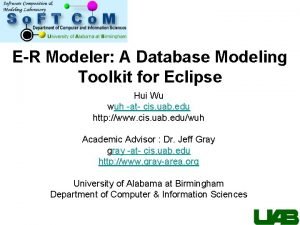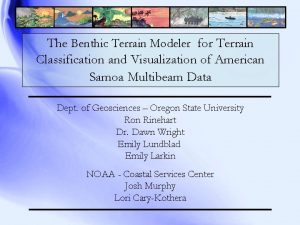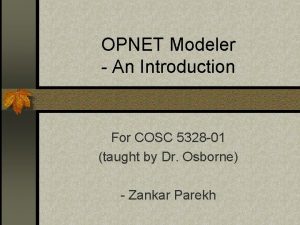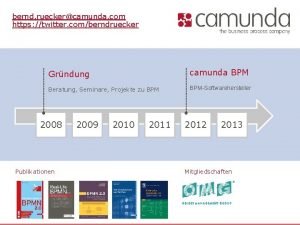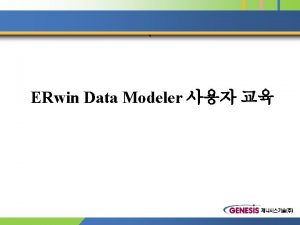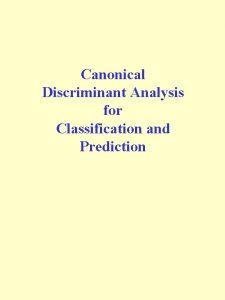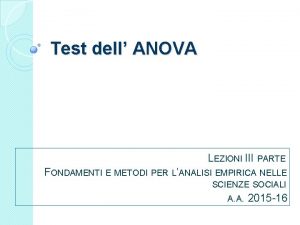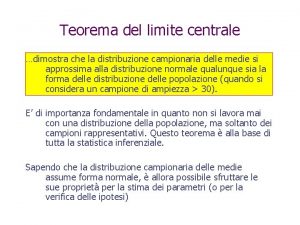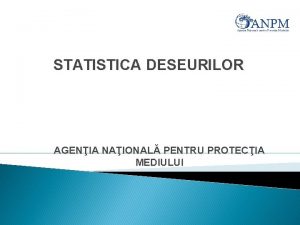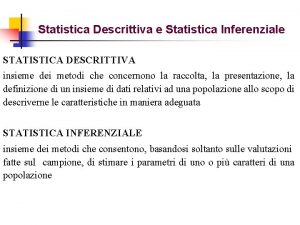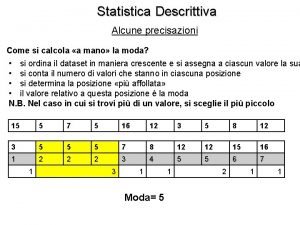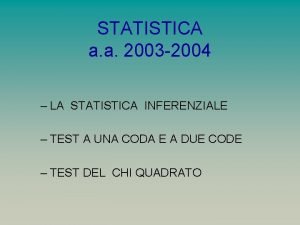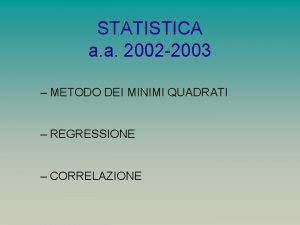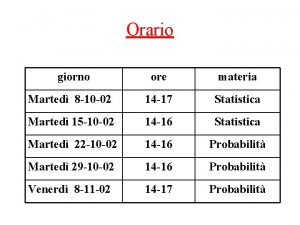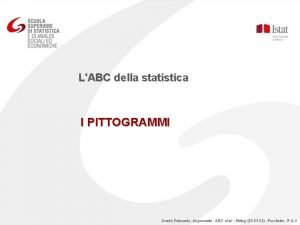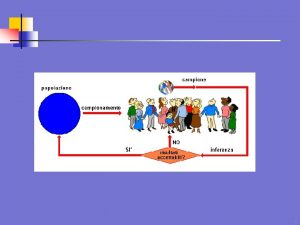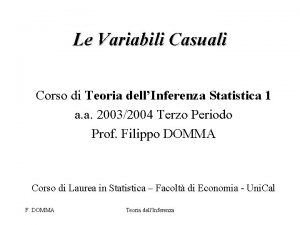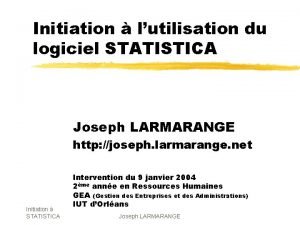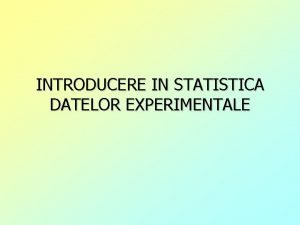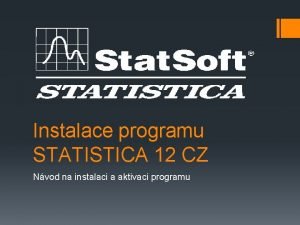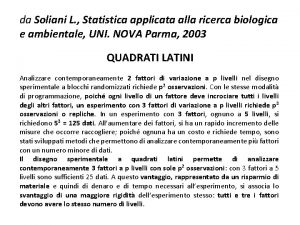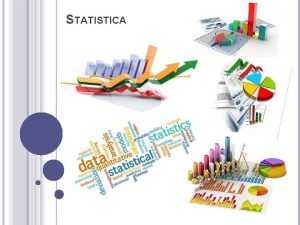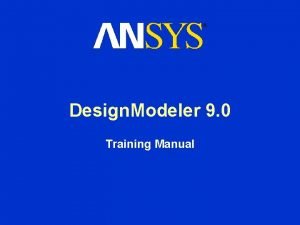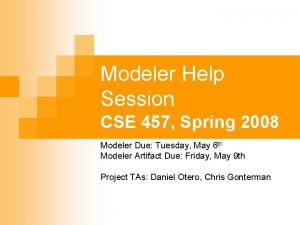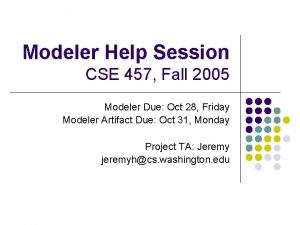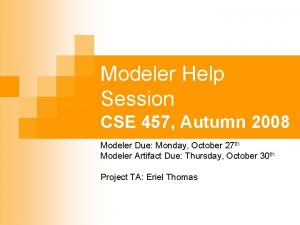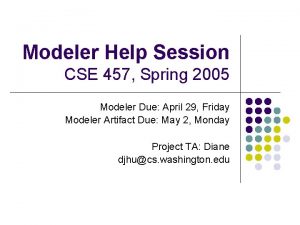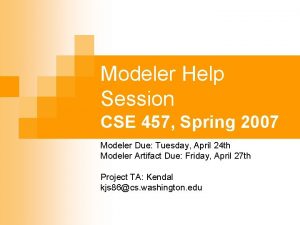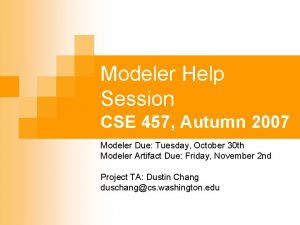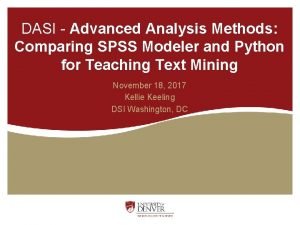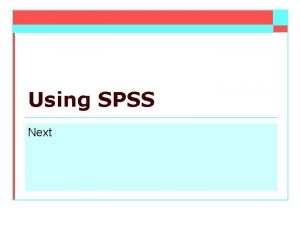Using SPSS Modeler and STATISTICA to Predict Student




































- Slides: 36

Using SPSS Modeler and STATISTICA to Predict Student Success on High-Stakes Examinations Dr. Galina Belokurova Assistant Director, Institutional Research Dr. Chiarina Piazza Associate Dean, College of Nursing

Dr. Chiarina Piazza Associate Dean, College of Nursing

NCLEX Pass Rate – CA 2012/13 WCU http: //www. rn. ca. gov/education/passrates. shtml

Our BHAG Achieve 75% NCLEX-RN pass rate to meet BRN benchmark Achieve 80% NCLEX-RN pass rate to meet CCNE benchmark

Dr. Galina Belokurova Assistant Director, Institutional Research

Nuts & Bolts of Predicting NCLEX Outcomes I. Predict vs Explain II. Machine Learning III. Accuracy (Bias) and Stability (Variance) of Predictive Algorithms IV. Do results differ across software packages (includes comparative demonstration of SPSS Modeler 16 and STATISTICA)? ** Parts of this project were developed in collaboration with Dr. Mahmoud Albawaneh and Dr. Mark Riddle

Machine Learning • Unsupervised: the computer assigns observations to groups based on their similarity / difference (K-means) • Supervised: the computer uses variables provided by the researcher to group observations (C&RT, Regression, Discriminant, C 5. 0) Today we specifically focus on the second one

Stability of ML Algorithms • Unlike many traditional statistical methods, ML techniques rely on computational solutions and random sampling • How can we be sure that the results bear some connection to reality if there is no assumed distribution for comparison? • Experiment!

Preview 0. Pre-Modeling Tasks (data issues/balancing/ partition) 1. Predictors 2. Modeling 3. Evaluation 4. Output / Deployment

0. 1 Data 1. Data Profiling (column/structure/business rules studies) 2. Data Quality (empty source tables / columns, nulls, inconsistent / invalid values, coding) 3. Data Warehouse: Star Schema (fact table and dimensions) 4. Meaningful Data Input (each row is a graduate, no duplicates)

0. 2 Why do we need balancing? Relatively few NCLEX failures in the data We know more about why students pass than why they fail

0. 3 Why do we need partition? Training and Testing Subsamples • Training → use for grouping • Testing → helps check model’s accuracy and precision • Models are built on different training and testing subsamples on each run. This is the source of variance.

1. Predictors • • Demographic Institutional (program track, campus, status) Course performance details (min and max grade) Aggregate measures of academic performance Entrance exams (min and max) Independent ATI Assessments (min and max) Virtual Coach

Predictor Importance

Failed ATI Assessments

Classification and Regression Tree I

A Closer Look

C&R Tree II

A Closer Look

Model Evaluation What are a correct and a wrong predictions? New Data Predicted Fail Predicted Pass Actual Fail 70 35 Actual Pass 21 482 How do we evaluate C&R Trees and other classification models? Partition Training % in Training Testing % in Testing Correct 511 88 552 91 Wrong 67 12 56 9 Total 578 100 608 100

Improving Model Accuracy/Stability

Accuracy (Bias): Boosting Combine different models in one to improve accuracy. Can be prone to overfitting

Boosting Models’ Details

Reduce Variance: Bagging is basically bootstrap averaging

Bagging Models’ Details

Predictor Importance in Ensemble

Other Ensembles SPSS Modeler offers an automatic routine for creating an ensemble

Output 1. The output includes predicted outcome (Pass/Fail) and the probability of it occurring 2. Practitioners can decide how to assign costs of certain outcomes occurring 3. False Positives are costlier than False Negatives 4. False Positives can be treated as Negatives if the confidence is low

Interpreting Output

Deployment Tips New Data Predicted Fail Predicted Pass Actual Fail 70 35** Actual Pass 21 482 **False Positives are in Red

Using STATISTICA • Similar Models, Data Miner Recipes (automated) • Boosted Trees and Random Forests (Bagging) pose as separate entities

Balancing: More Control Possible to create a stratified random sample Easy to verify the composition of training and testing samples

Review • Results are surprisingly stable if predictors are strong • Models may vary in how they split observations into groups, but the big picture stays stable • Software packages also matter as proprietary algorithms may produce slightly different results, but the big picture is stable as well

Achieving BHAG Steps Taken: • Continued Partnership with ATI • Core teams assembled who are dedicated to remediating students at risk (STARs) • Mechanisms developed to identify STARs early in core nursing program • Necessary resources provided for NCLEX success Results: • 2015 -2016 WCU pass rate projected to be 87% • 2016 Q 3 CA pass rate was 95%

NCLEX Pass Rate – CA 2014/15 http: //www. rn. ca. gov/education/passrates. shtml

Sustaining BHAG Steps Ahead: • Create NCLEX Success Pathways according to the metrics determined to best reflect a student’s need for remediation
 Idf modeler
Idf modeler Oracle data modeler
Oracle data modeler Eclipse data modeling
Eclipse data modeling Benthic terrain modeler
Benthic terrain modeler Opnet modeler
Opnet modeler Sap predictive analytics modeler
Sap predictive analytics modeler Download camunda modeler
Download camunda modeler Turbine operation
Turbine operation Sql developer modeler
Sql developer modeler Vertical
Vertical Repeat modeler
Repeat modeler What is 100 pv in amway
What is 100 pv in amway Benthic terrain modeler
Benthic terrain modeler Discriminant analysis using spss
Discriminant analysis using spss Grado di libertà statistica
Grado di libertà statistica Gradi di libertà statistica
Gradi di libertà statistica Sim statistica deseurilor
Sim statistica deseurilor Campionamento a grappolo
Campionamento a grappolo Calcolo mediana
Calcolo mediana Chi quadro statistica
Chi quadro statistica Metodo dei minimi quadrati statistica
Metodo dei minimi quadrati statistica Esercizi di statistica scuola primaria
Esercizi di statistica scuola primaria Pittogrammi statistica
Pittogrammi statistica Funzione di ripartizione statistica
Funzione di ripartizione statistica Che cosa studia la statistica
Che cosa studia la statistica Gradi di libertà statistica
Gradi di libertà statistica Momento misto statistica
Momento misto statistica Tabella a doppia entrata
Tabella a doppia entrata Larmarange
Larmarange Storia della statistica
Storia della statistica Tabelle statistica descrittiva
Tabelle statistica descrittiva Introducere in statistica
Introducere in statistica Statistica 12
Statistica 12 Quadrato latino statistica
Quadrato latino statistica Ideogramma e istogramma
Ideogramma e istogramma Mediana statistica
Mediana statistica Babe pig
Babe pig


